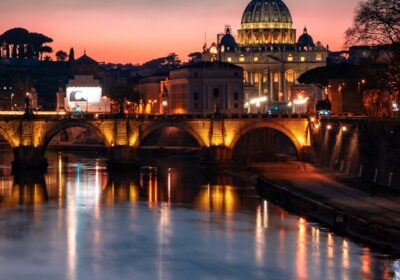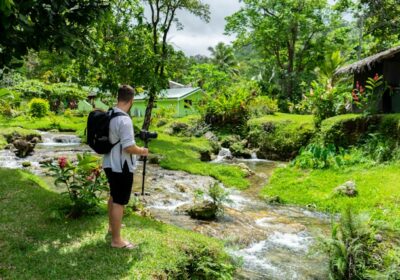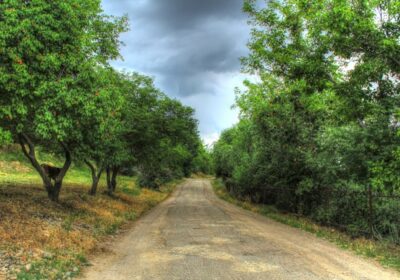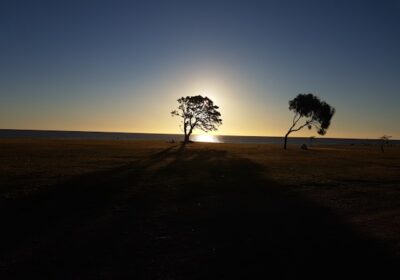Discovering Bhutan: The Last Shangri-La
Nestled in the eastern Himalayas, Bhutan is a hidden gem renowned for its stunning landscapes, rich cultural heritage, and commitment to preserving its unique traditions. Often referred to as the “Last Shangri-La,” Bhutan offers an enchanting blend of natural beauty and spiritual tranquility. From its majestic monasteries and vibrant festivals to its breathtaking mountains and lush valleys, Bhutan is a destination that captivates the soul and inspires awe.
Arrival and First Impressions
Arriving in Bhutan, you’re immediately struck by the country’s remarkable natural beauty and the warm hospitality of its people. The Paro International Airport, situated in the picturesque Paro Valley, serves as the main entry point for visitors. The approach to the airport is a thrilling experience, with the plane navigating through the towering peaks of the Himalayas. As you touch down, the sight of terraced fields, ancient monasteries, and traditional Bhutanese architecture sets the stage for an unforgettable journey.
Top Attractions and Activities
1. Paro Taktsang (Tiger’s Nest Monastery)
One of Bhutan’s most iconic landmarks, the Paro Taktsang, also known as Tiger’s Nest Monastery, is perched precariously on a cliff 3,120 meters above sea level. This sacred site is a significant pilgrimage destination and offers breathtaking views of the surrounding valleys. The hike to the monastery, though challenging, is rewarding, with stunning vistas and serene forest paths leading to this architectural marvel. The monastery is renowned for its spiritual significance and is a symbol of Bhutan’s rich Buddhist heritage.
2. Thimphu
The capital city of Thimphu is a vibrant blend of tradition and modernity. The city is home to several key attractions, including:
- Tashichho Dzong: A majestic fortress and monastery that serves as the seat of the Bhutanese government. The dzong’s stunning architecture and intricate murals make it a must-visit.
- Buddha Dordenma: An enormous bronze statue of Buddha that stands 51.5 meters tall, offering panoramic views of Thimphu Valley.
- National Memorial Chorten: A prominent stupa built in memory of the third King of Bhutan, Jigme Dorji Wangchuck. It’s a place of worship and reflection for locals.
3. Punakha Dzong
Often regarded as one of the most beautiful dzongs in Bhutan, Punakha Dzong is situated at the confluence of the Pho Chhu and Mo Chhu rivers. The dzong is renowned for its stunning architecture, elaborate woodwork, and historical significance. It was once the winter capital of Bhutan and continues to serve as a religious and administrative center. The dzong is especially picturesque during the annual Punakha Drubchen festival, which features traditional dances and ceremonies.
4. Bumthang Valley
Known as the cultural heartland of Bhutan, the Bumthang Valley is a serene and picturesque region dotted with ancient temples and monasteries. Key attractions include:
- Jakar Dzong: An impressive fortress and monastery that dominates the valley.
- Kurjey Lhakhang: A sacred site where Guru Rinpoche, the patron saint of Bhutan, is believed to have meditated.
The valley’s rolling hills, lush forests, and traditional farms offer a glimpse into Bhutanese rural life.
5. Haa Valley
A lesser-visited gem, the Haa Valley offers stunning landscapes and a tranquil atmosphere. The valley is known for its picturesque scenery, traditional Bhutanese architecture, and vibrant cultural festivals. The annual Haa Summer Festival showcases local traditions, including traditional sports, music, and dance.
Cultural Experiences
1. Festivals
Bhutan’s festivals, known as tshechus, are vibrant and colorful celebrations of Bhutanese culture and religion. Held throughout the year in various dzongs, these festivals feature traditional dances, music, and elaborate costumes. The Paro Tshechu and Thimphu Tshechu are among the most famous and attract both locals and tourists.
2. Bhutanese Cuisine
Bhutanese cuisine is characterized by its bold flavors and use of local ingredients. Key dishes to try include:
- Ema Datshi: A spicy cheese and chili dish that is considered the national dish of Bhutan.
- Phaksha Paa: A spicy pork curry with radish and chilies.
- Jasha Maroo: A spicy chicken stew.
Local eateries and traditional restaurants offer a chance to savor these flavorful dishes and experience Bhutanese hospitality.
Practical Tips for Visitors
- Visa and Permits: All visitors to Bhutan must obtain a visa, which is arranged through a licensed Bhutanese tour operator. The visa fee is included in the package, which also covers accommodation, meals, and a guide.
- Best Time to Visit: The ideal times to visit Bhutan are during the spring (March to May) and autumn (September to November) when the weather is pleasant and the skies are clear. These seasons offer the best conditions for sightseeing and trekking.
- Currency: The local currency is the Bhutanese Ngultrum (BTN), which is pegged to the Indian Rupee (INR). Credit cards are accepted in major cities and hotels, but it’s advisable to carry some local currency for smaller establishments.
- Health and Safety: Bhutan is a safe destination, but it’s important to stay hydrated and acclimatize to the altitude, especially if traveling to higher elevations. It’s also a good idea to check with your doctor about any recommended vaccinations before traveling.
Reflection and Farewell
As my visit to Bhutan drew to a close, I was left with a profound appreciation for the country’s unique blend of natural beauty, cultural richness, and spiritual depth. The majestic landscapes, ancient monasteries, and warm hospitality created an experience that was both enriching and inspiring.
In the enchanting landscapes of Bhutan, I found a place where time seems to stand still, and where the essence of tranquility and tradition permeates every aspect of life. For anyone seeking a journey into a land of breathtaking beauty and profound cultural heritage, Bhutan is a destination that promises a truly transformative experience.






Leave feedback about this